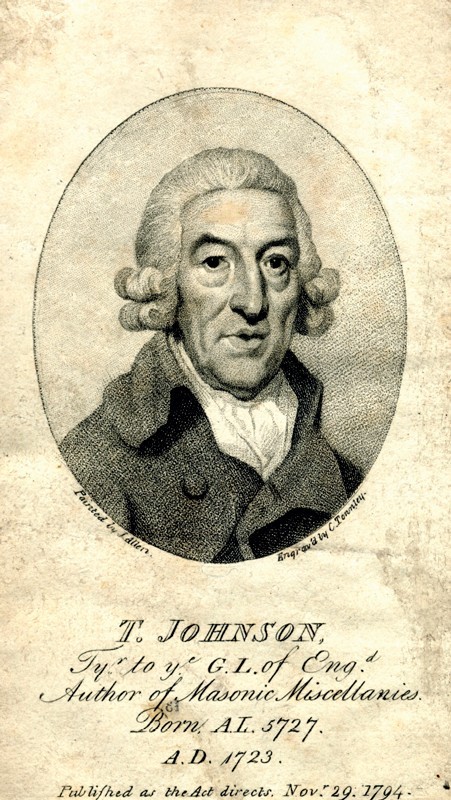
Charles Townley after Joseph Allen, Thomas Johnson, frontispiece in A Brief History of Freemasonry (2nd ed., 1784). (Courtesy, Library and Museum of Freemasonry, London.)
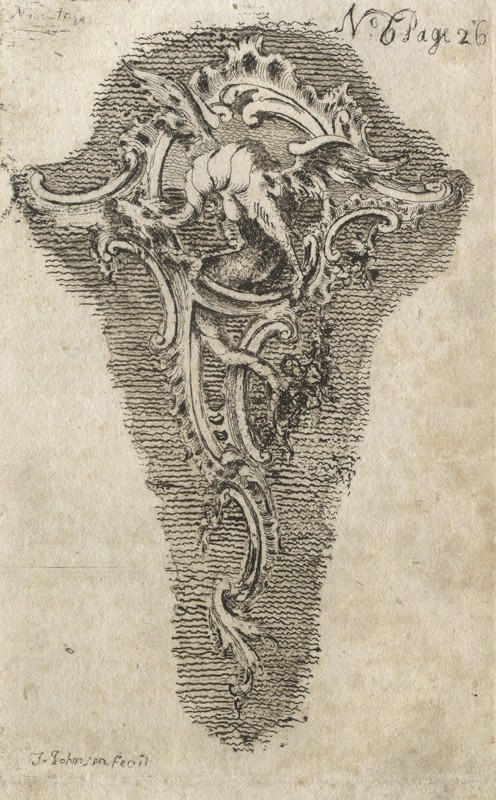
Thomas Johnson, “Contrast bracket to hold a small figure or busto,” London, 1793, from a design drawn in 1746. Etching and aquatint. (Thomas Johnson, The Life of the Author [1793]; courtesy, Library and Museum of Freemasonry.) Matthias Lock’s influence is evident in the drawing and posture of the dragon and style of the leafage, scrolls, and flowers. For related work by Lock, see his 1746 etching of a sideboard table in Peter Ward Jackson, English Furniture Designs of the Eighteenth Century (London: Her Majesty’s Stationery Office, 1958), pl. 50.

Portrait bust from a chimneypiece, attributed to John Houghton and stonecutter David Sheenhan, from Kenmare House, County Kerry, Ireland, ca. 1752. (Courtesy, Bonhams.)
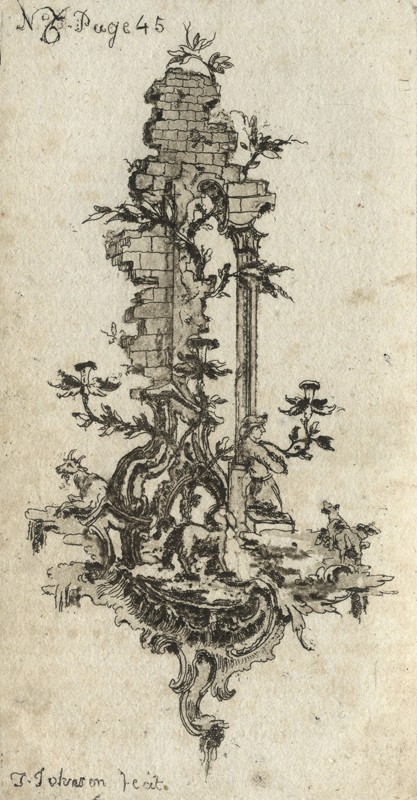
Thomas Johnson, Girandole with “a ruinated building, with cattle, &c.,” London, 1793, from a design drawn in 1755. Etching and aquatint. (Thomas Johnson, The Life of the Author [1793]; courtesy, Library and Museum of Freemasonry.)
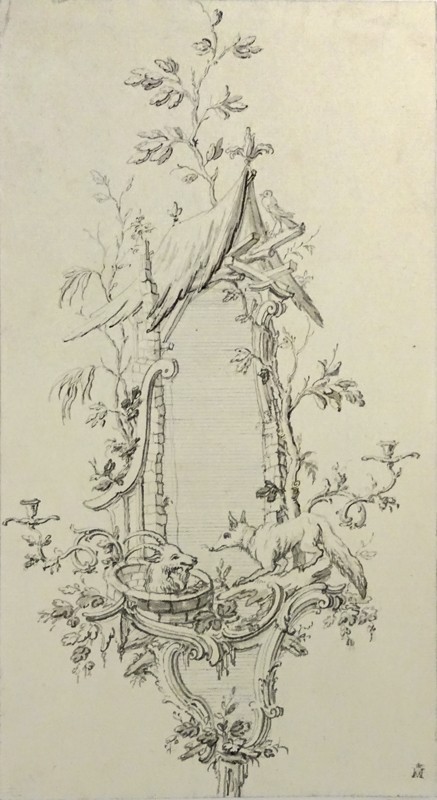
Girandole design attributed to Matthias Lock, London, ca. 1750. Pen and ink wash. 10" x 5 3/8". (© Victoria & Albert Museum; George Lock Collection.)
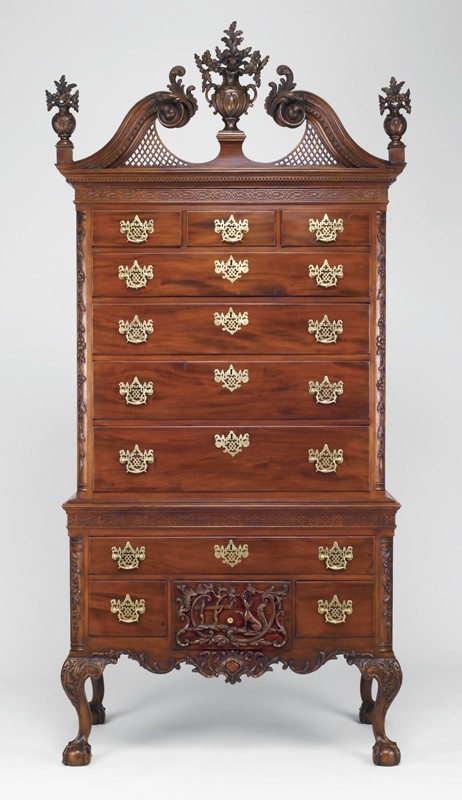
High chest of drawers with carving attributed to Bernard and Jugiez, Philadelphia, Pennsylvania, 1770–1775. Mahogany with yellow pine, tulip poplar, and white cedar. H. 96 3/4", W. 45 1/2", D. 24 1/2". (Courtesy, Philadelphia Museum of Art; photo, Graydon Wood.) The carving on the chest and its matching dressing table is attributed to Bernard and Jugiez. Their firm advertised in several coastal cities and shipped carving as far south as Charleston, South Carolina. Bernard and Jugiez also did commission work for prominent Philadelphians, including Chief Justice Benjamin Chew, Samuel Powel, and John Cadwalader, and cabinetmakers, including Thomas Affleck. The carvers may have worked for Benjamin Randolph, who clearly had access to Johnson’s designs. On August 4, 1771, Nicholas Bernard received a note from Randolph for £40 “payable in Six Months wen paye Shall be in full” (Benjamin Randolph Receipt Book, Winterthur Museum).
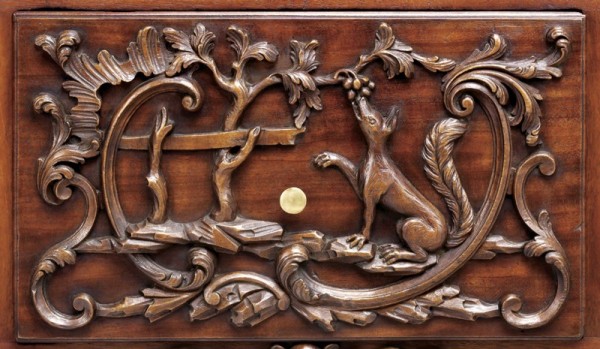
Detail of the appliqué on the center drawer of the lower case of the high chest illustrated in fig. 6.

Detail of a design for a pier glass illustrated on pl. 21 in Thomas Johnson’s One Hundred & Fifty New Designs (London, 1761). (Courtesy, Winterthur Museum.) Johnson sold his designs in installments between 1756 and 1757 and as collected editions in 1758 [untitled] and 1761 [titled]). Jacob Simon, “Thomas Johnson’s The Life of the Author,” Furniture History 39 [2003]: 10).
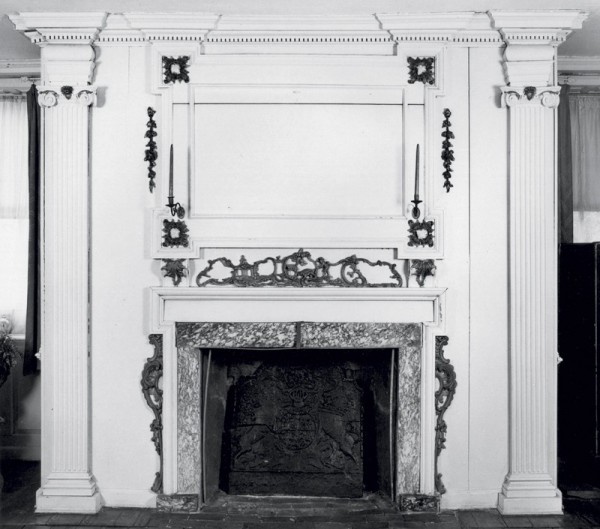
Parlor in Cloverfields, Queen Anne’s County, Maryland, ca. 1728, with carving installed ca. 1770. (Courtesy, Museum of Early Southern Decorative Arts.)

Detail of the chimneypiece appliqué illustrated in fig. 9.

Detail of the chimneypiece appliqué illustrated in fig. 9.
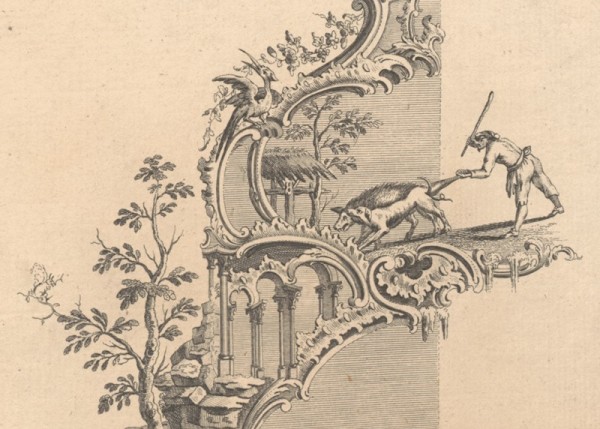
Detail of a design for a mirrored overmantel frame illustrated on plate 5 in Thomas Johnson’s One Hundred & Fifty New Designs (London, 1761). (Courtesy, Winterthur Museum.)
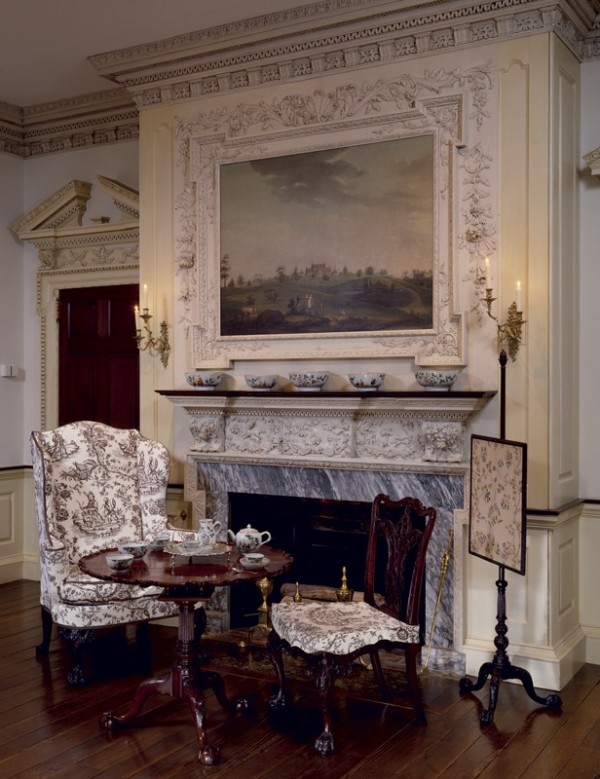
Parlor from the Blackwell House, Philadelphia, Pennsylvania, built ca. 1764. (Courtesy, Winterthur Museum.) The carving was probably installed between 1766 and 1770.

High chest of drawers with carving attributed to Hercules Courtenay, Philadelphia, Pennsylvania, 1765–1775. Mahogany and mahogany veneer with yellow pine, tulip poplar, and white cedar. H. 91 3/4", W. 44 5/8", D. 22 1/2". (Courtesy, Metropolitan Museum of Art.)

Detail of the tablet on the chimneypiece illustrated in fig. 13.
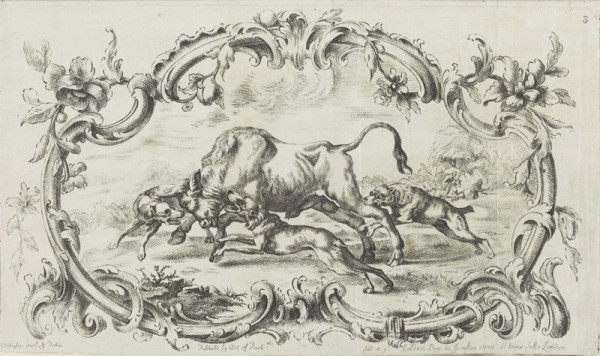
Design for a chimneypiece tablet illustrated on plate 3 on Thomas Johnson’s A New Book of Ornaments By Thos. Johnson Carver, Design’d for Tables & Frizes for Chimneypieces; Useful for Youth to Draw After (London, 1762). (© Victoria & Albert Museum.)

Detail of the drawer appliqué on the high chest illustrated in fig. 14.
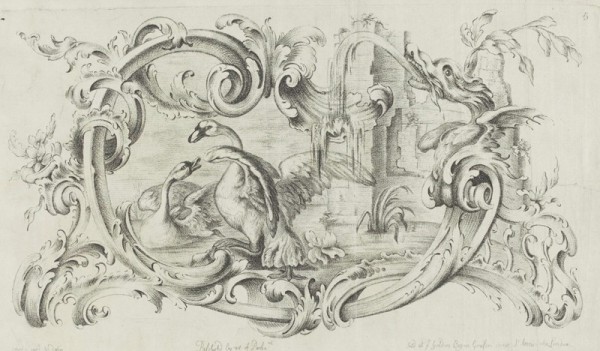
Design for a chimneypiece tablet illustrated on plate 5 in Thomas Johnson’s A New Book of Ornaments By Thos. Johnson Carver, Design’d for Tables & Frizes for Chimneypieces; Useful for Youth to Draw After (London, 1762). (© Victoria & Albert Museum.)
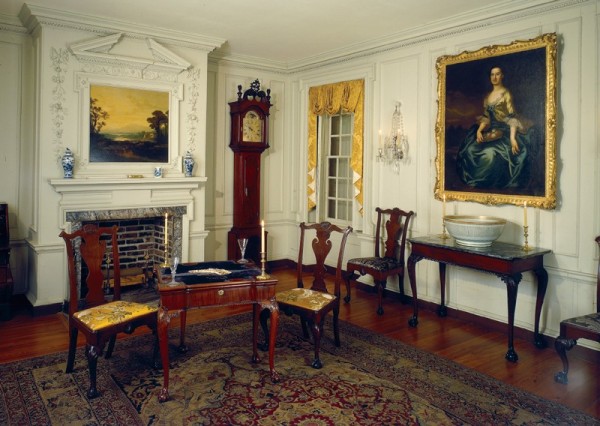
Parlor from the Thomas Ringgold House, American, Chestertown, Maryland, ca. 1770. Carver: John Pollard. Carver: Hercules Courtenay. Maker: unknown builder/architect. Yellow pine and mahogany, King of Prussia marble. H. 119 1/4, W. 263, D. 201 1/2". (Courtesy, The Baltimore Museum of Art, purchased as the gift of Emma James Johnson in memory of her husband J. Hemsley Johnson, BMA1932.32.1; photo, Gavin Ashworth.)
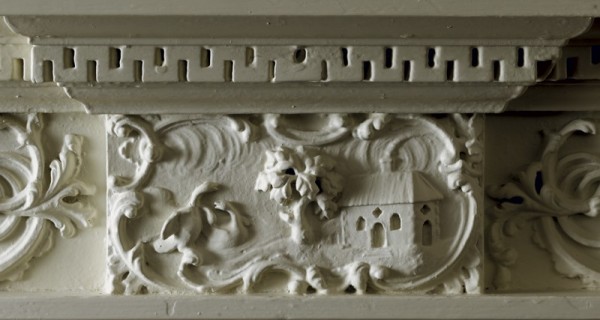
Detail of the tablet of the chimneypiece illustrated in fig. 19. (Photo, Gavin Ashworth.)
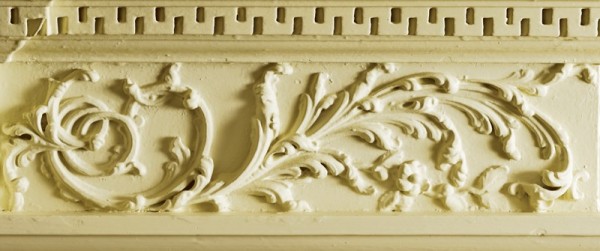
Detail of the right frieze appliqué on the chimneypiece illustrated in fig. 19. (Photo, Gavin Ashworth.)
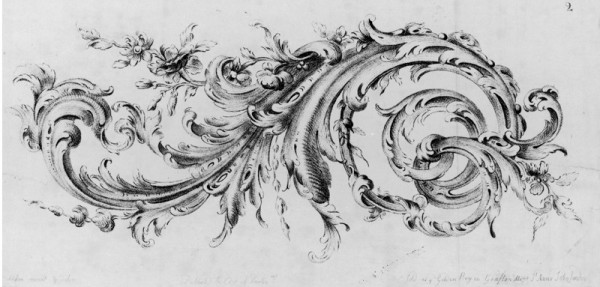
Design for a chimneypiece frieze illustrated on plate 2 in Thomas Johnson’s A New Book of Ornaments By Thos. Johnson Carver, Design’d for Tables & Frizes for Chimneypieces; Useful for Youth to Draw After (London, 1762). (© Victoria & Albert Museum.)
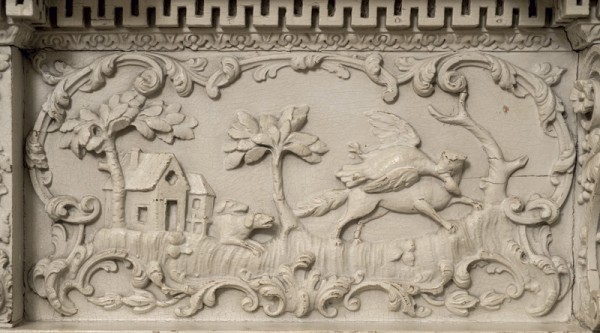
Detail of the right frieze appliqué on the chimneypiece illustrated in fig. 13.

Detail of a pier-glass design illustrated on plate 43 in Thomas Johnson’s One Hundred & Fifty New Designs (London, 1761). (Courtesy, Winterthur Museum.)
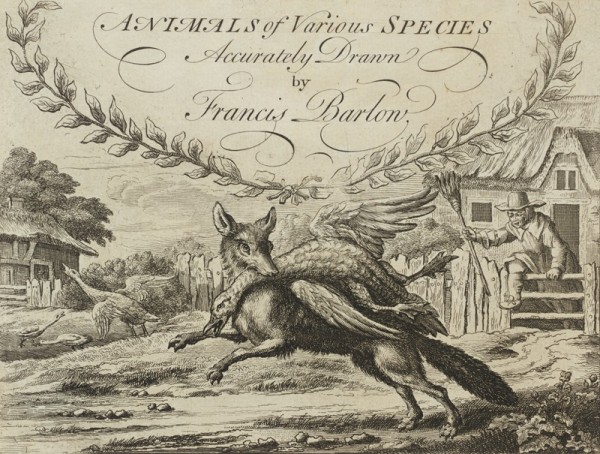
Title page of Animals of Various Species Accurately Drawn by Francis Barlow, part three of Various Birds and Beasts Drawn from the Life (London, ca. 1660–1670). (Courtesy, Tate Museum.)

Detail of the left frieze appliqué on the chimneypiece illustrated in fig. 13.

Plate 18 in Animals of Various Species Accurately Drawn by Francis Barlow, part three of Various Birds and Beasts Drawn from the Life (London, ca. 1660–1670). (Courtesy, Tate Museum.)

Detail of the tablet on the chimneypiece illustrated in fig. 13.

Plate 21 in Animals of Various Species Accurately Drawn by Francis Barlow, part three of Various Birds and Beasts Drawn from the Life (London, ca. 1660–1670). (Courtesy, Tate Museum.)
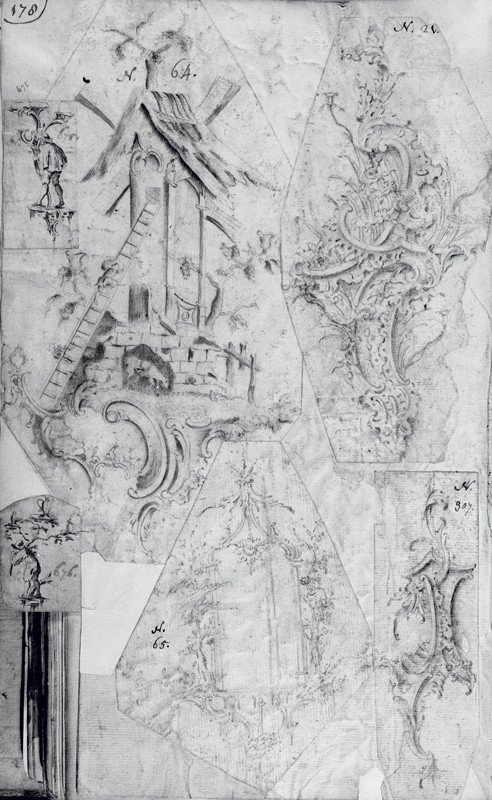
Designs for girandoles in the scrapbook of Gideon Saint, London, ca. 1765. (Courtesy, Metropolitan Museum of Art; photo, Art Resource.) These pages include engravings of Thomas Johnson’s designs as well as a pencil drawing of a girandole by Saint.
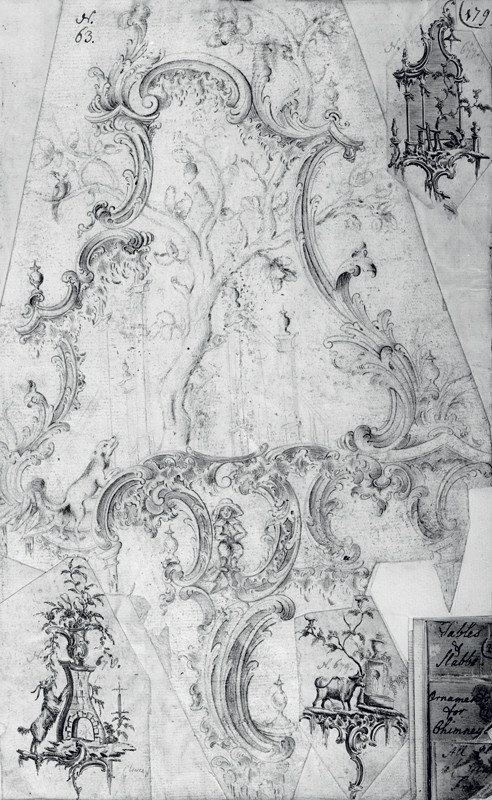
Drawings for looking-glass frames in the scrapbook of Gideon Saint, London, England, ca. 1765. (Courtesy, Metropolitan Museum of Art; photo, Art Resource.) Saint copied these designs from Matthias Lock’s A New Drawing Book of Ornaments, Shields, Compartments, Marks, &c. London, ca. 1746.
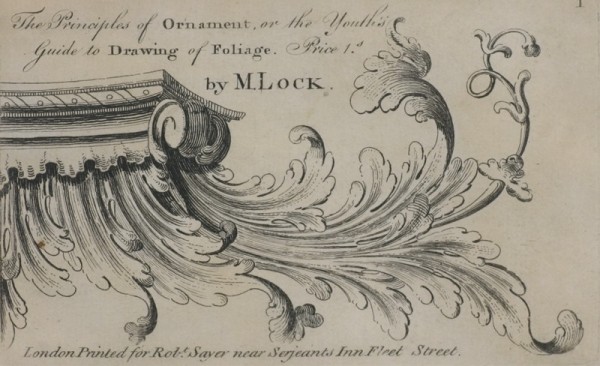
Title page of Matthias Lock’s The Principles of Ornament or the Youth’s Guide to Drawing of Foliage (London ca. 1746). (Chipstone Foundation.) This page is from Robert Sayer’s ca. 1768 reissue; no copy of the ca. 1746 publication is known.
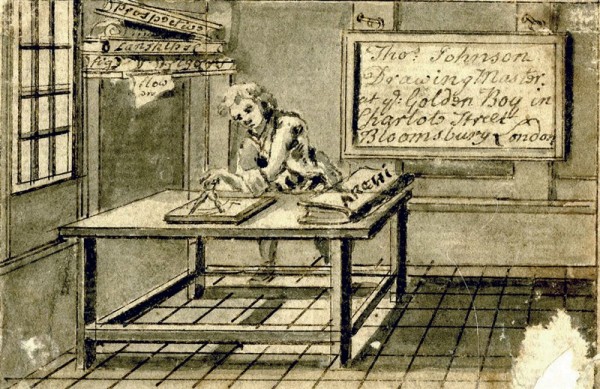
Thomas Johnson, design for a trade card, London, 1769–1775. Watercolor on paper. (© The Trustees of the British Museum. Shared under a Creative Commons Attribution-NonCommercial-ShareAlike 4.0 International (CC BY-NC-SA 4.0) licence.)
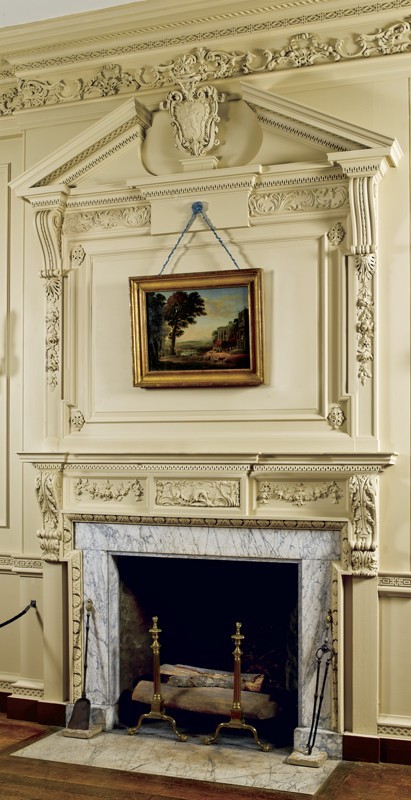
Chimneypiece from the parlor of the Samuel Powel House, Philadelphia, Pennsylvania, built ca. 1765. (Courtesy, Philadelphia Museum of Art; photo, Gavin Ashworth.) The carving was installed in 1770.
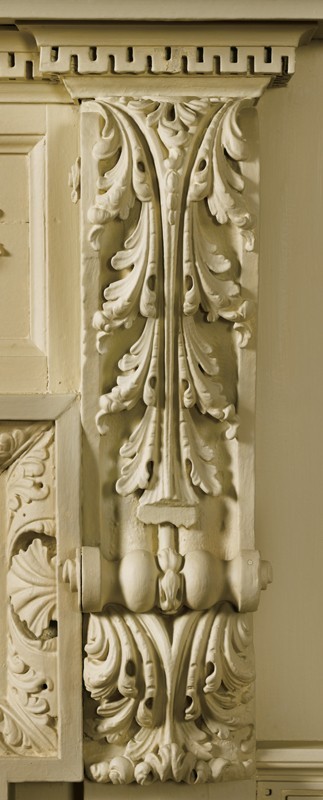
Detail of the right truss on the chimneypiece illustrated in fig. 34. (Photo, Gavin Ashworth.)
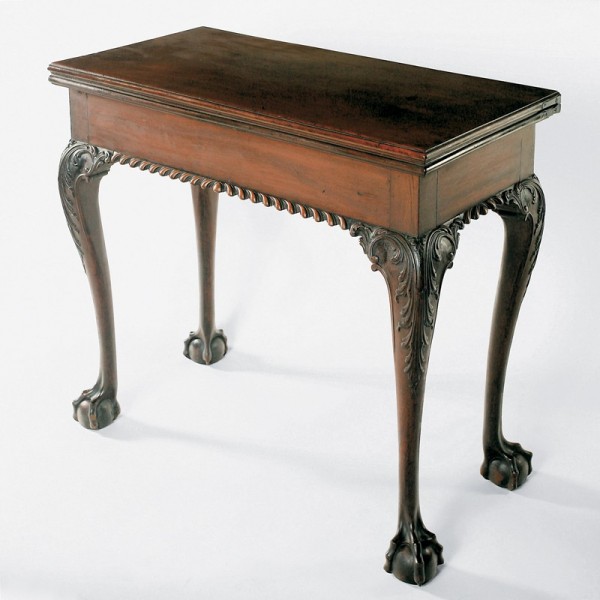
Card table with carving attributed to Hercules Courtenay, 1765–1775. Mahogany with oak and yellow pine. Dimensions not recorded. (Private collection; photo, Mack Coffey.)
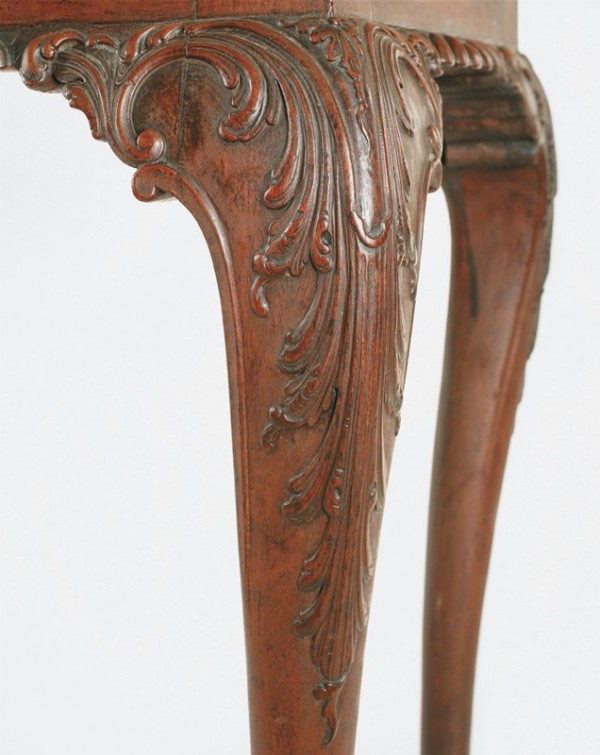
Detail of the knee carving on the card table illustrated in fig. 36.

Detail of the tablet of the chimneypiece illustrated in fig. 34.
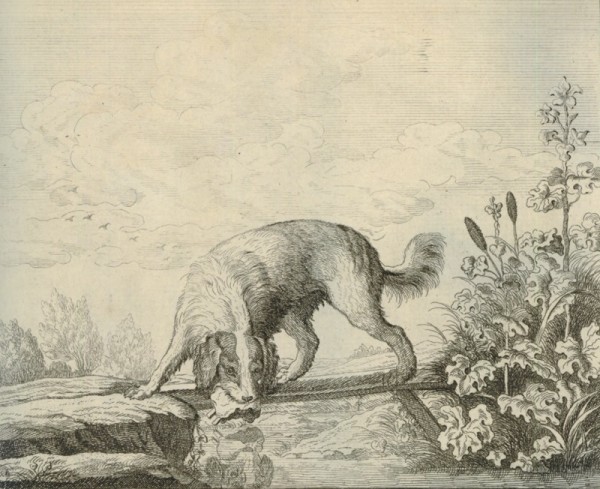
James Kirk (etcher) after Francis Barlow, “The Dog and Piece of Flesh,” published by Robert Sayer (London, ca. 1760). (© The Trustees of the British Museum. Shared under a Creative Commons Attribution-NonCommercial-ShareAlike 4.0 International (CC BY-NC-SA 4.0) licence.)
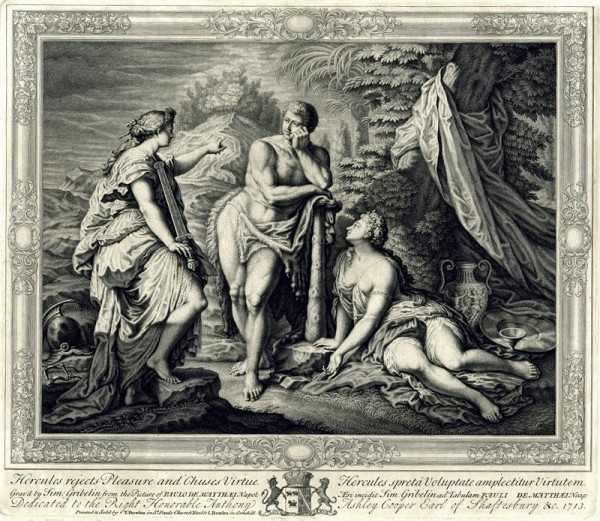
Simon Gribelin after Paolo de Mattheis, The Judgment of Hercules, engraving from Anthony Ashley Cooper, 3rd Earl of Shaftesbury, Characteristicks of Men, Manners, Opinions, Times.
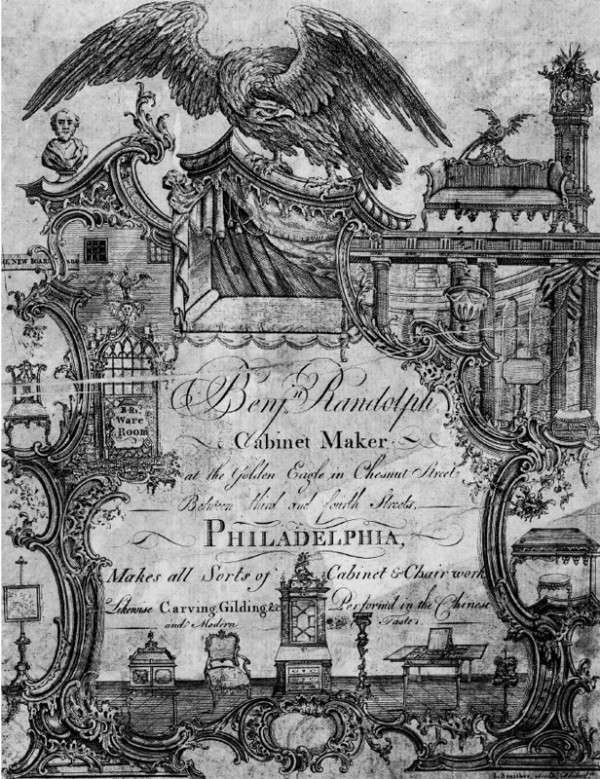
James Smithers, trade card of Benjamin Randolph, 1769. Engraving on paper. 7" x 9". (Courtesy, Library Company of Philadelphia.)
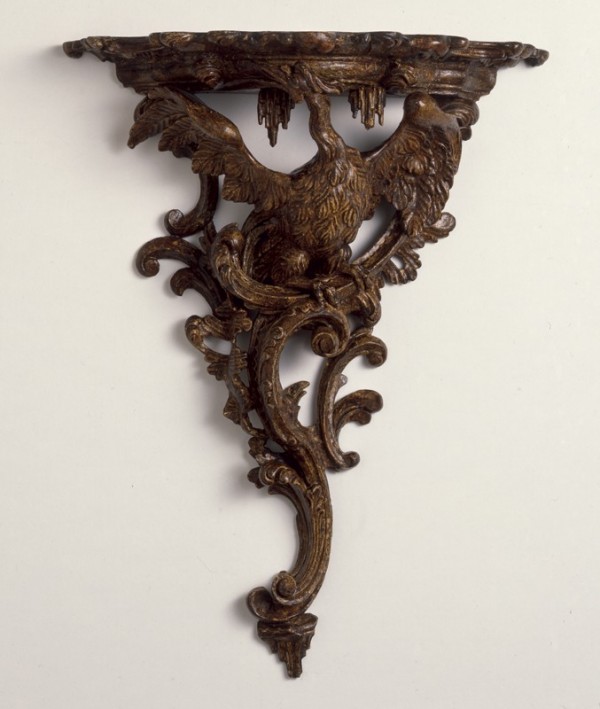
Bracket, Philadelphia, Pennsylvania, 1765–1770. White pine. H. 16", W. 12 3/4", D. 5 3/8". (Courtesy, Winterthur Museum.)
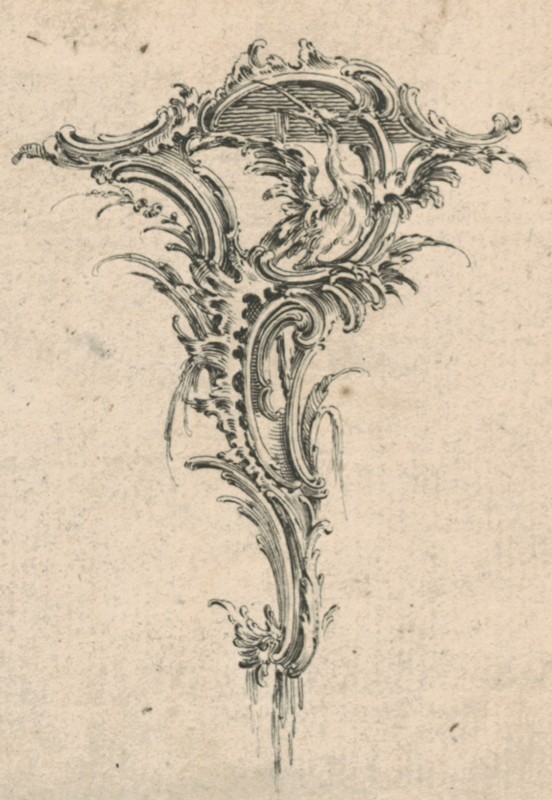
Design for a bracket illustrated on plate 27 in Thomas Johnson’s One Hundred & Fifty New Designs (London, 1761). (Courtesy, Winterthur Museum.)
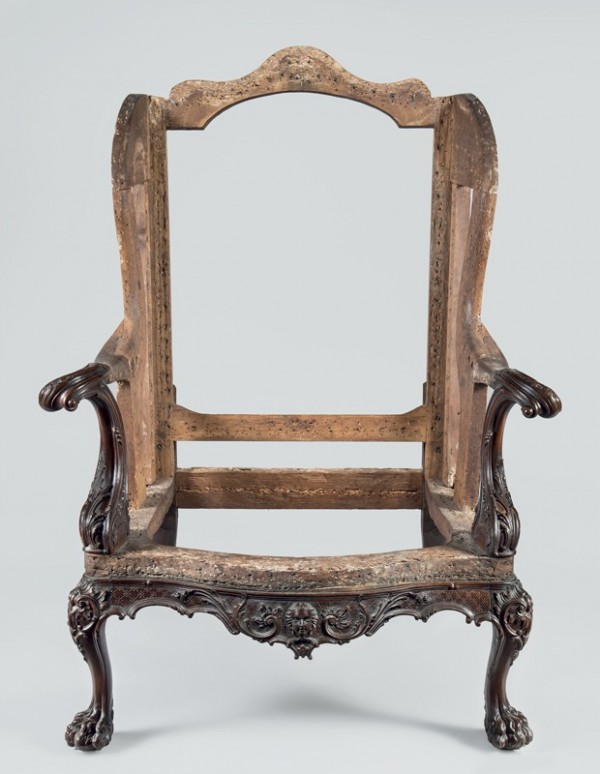
Easy chair attributed to the shop of Benjamin Randolph, Philadelphia, Pennsylvania, 1765-1769. Mahogany with white oak. H. 45 1/4", W. 24 3/8", D. 27 15/16". (Courtesy, Philadelphia Museum of Art; photo, Gavin Ashworth.)
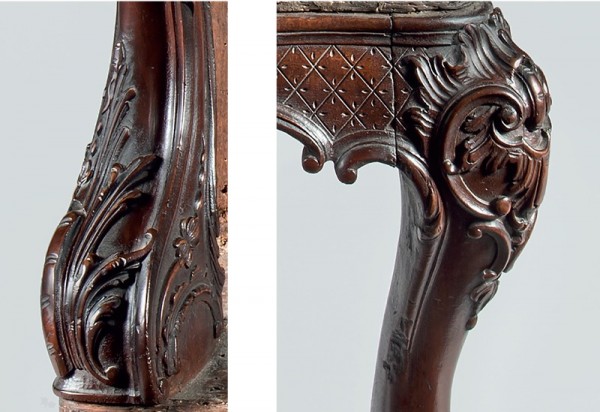
Details of the carving on the left arm support and right leg of the easy chair illustrated in fig. 44. (Photo, Gavin Ashworth.)
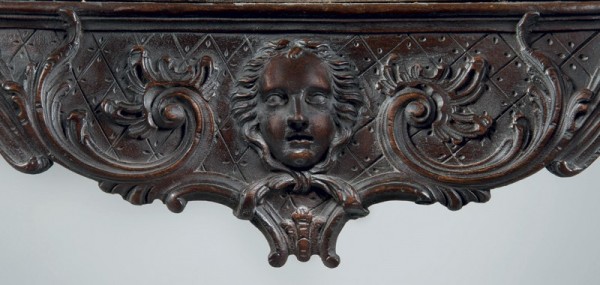
Detail of the front rail of the easy chair illustrated in fig. 44. (Photo, Gavin Ashworth.)
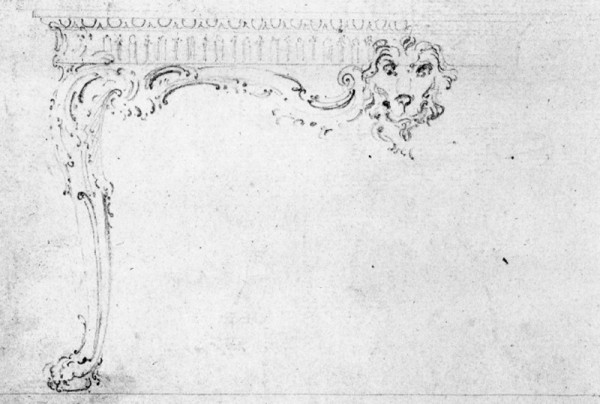
Design for a pier table attributed to Matthias Lock, London, ca. 1745. Graphite on paper. Dimensions not recorded. (© Victoria & Albert Museum.)

Side chair attributed to the shop of Benjamin Randolph, Philadelphia, Pennsylvania, ca. 1769. Mahogany with white cedar. H. 36 3/4", W. 21 3/4" (seat), D. 17 7/8" (seat). (Chipstone Foundation; photo, Gavin Ashworth.)
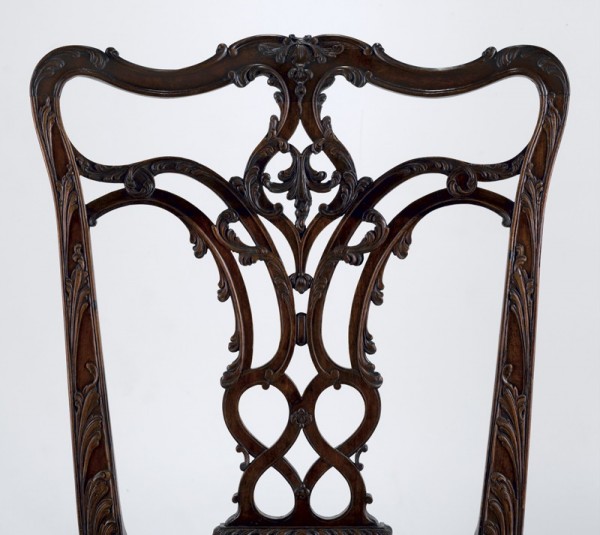
Detail of the back of the side chair illustrated in fig. 48. (Photo, Gavin Ashworth.)
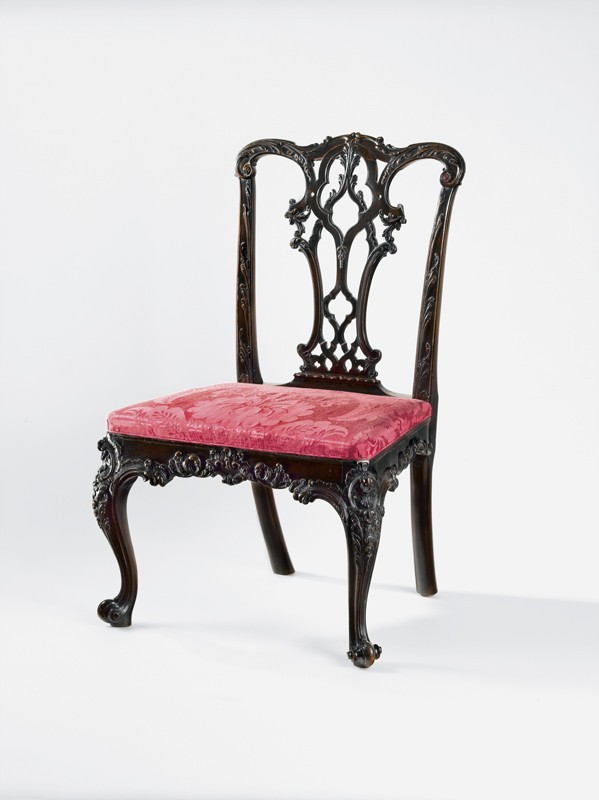
Side chair attributed to the shop of Benjamin Randolph, Philadelphia, Pennsylvania, 1765–1769. Mahogany. H. 37 1/2", W. 24 1/2", D. 21". (Courtesy, Philadelphia Museum of Art; photo, Gavin Ashworth.)
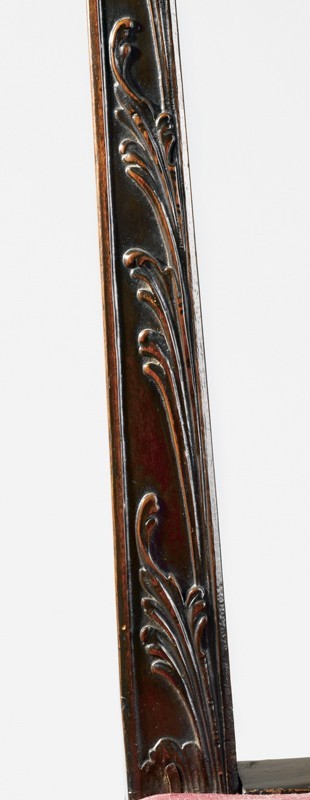
Detail of the left rear stile of the side chair illustrated in fig. 50. (Photo, Gavin Ashworth.)
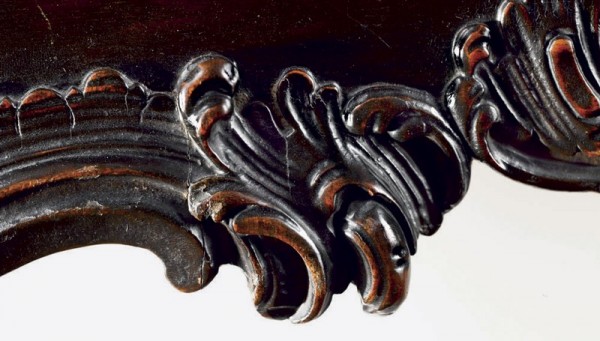
Detail of the carving on the front rail of the side chair illustrated in fig. 50. (Photo, Gavin Ashworth.)
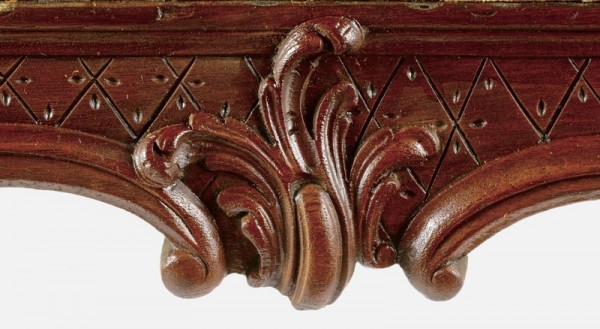
Detail of the carving on the side rail of the easy chair illustrated in fig. 44. (Photo, Gavin Ashworth.)
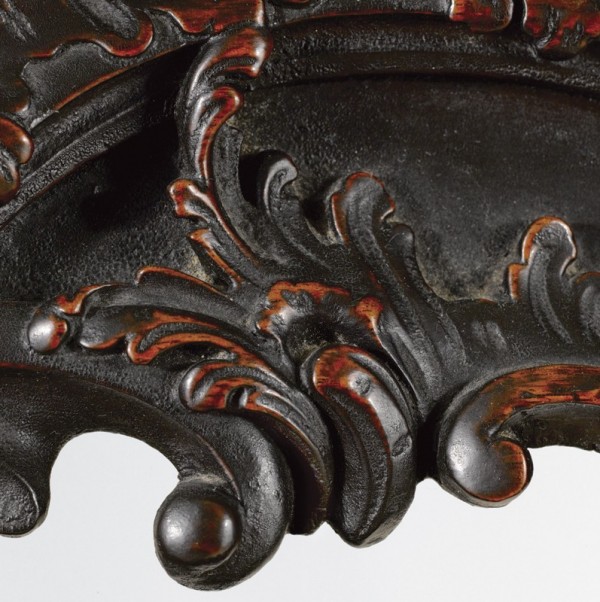
Detail of the carving on the side rail of the pier table illustrated in fig. 55. (Photo, Gavin Ashworth.)
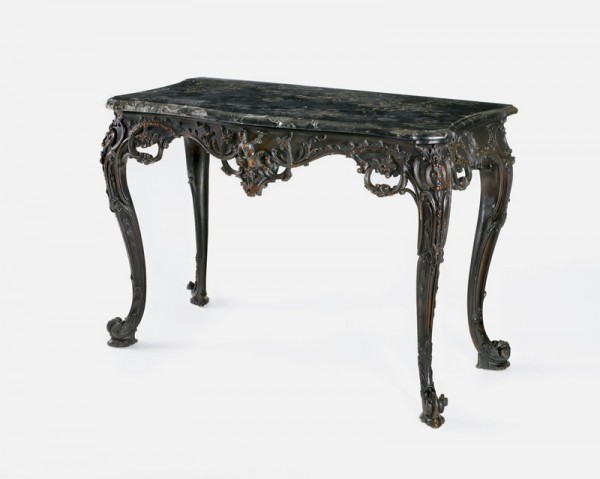
Pier table attributed to the shop of Benjamin Randolph with carving attributed to John Pollard, Philadelphia, Pennsylvania, 1765–1770. Mahogany with yellow pine and walnut. H. 32 3/8", W. 48", D. 23 1/4". (Courtesy, Metropolitan Museum of Art, John Stewart Kennedy Fund, 1918 [18.110.27]; photo, Gavin Ashworth.)
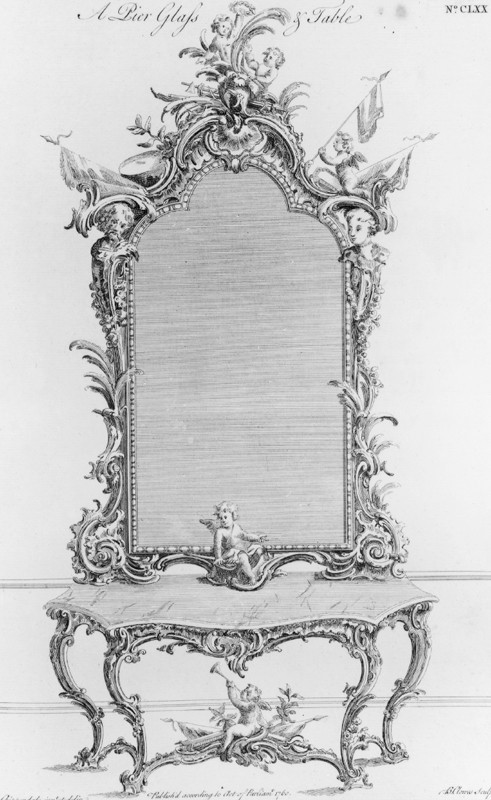
Design for a pier glass and table illustrated on pl. 152 in the third edition of Thomas Chippendale’s Gentleman and Cabinet Maker’s Director (London, 1762). (Courtesy, Winterthur Museum.)
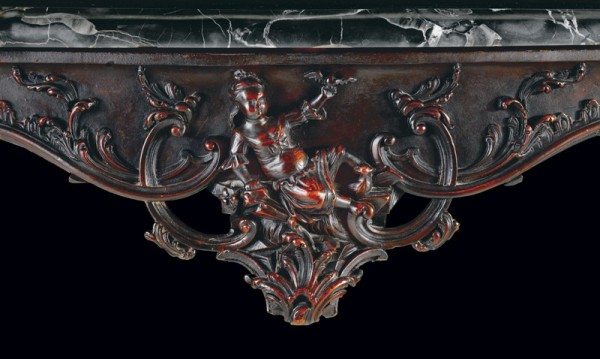
Detail of the carving on the front rail of the pier table illustrated in fig. 55.
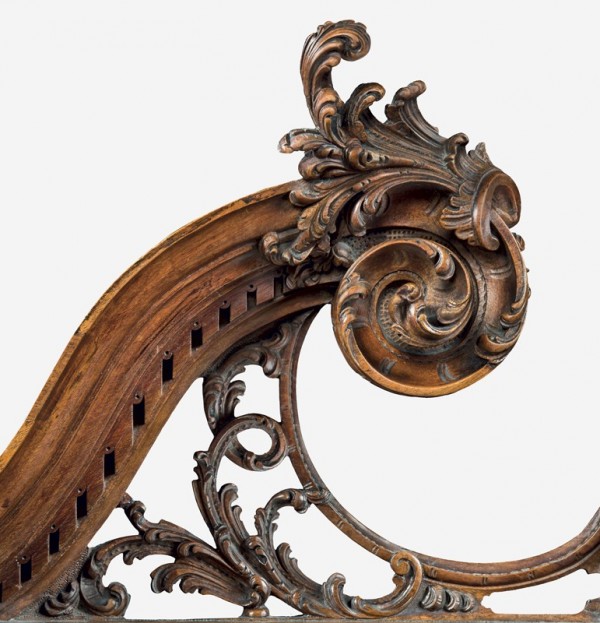
Detail of the tympanum carving on the high chest illustrated in fig. 14.
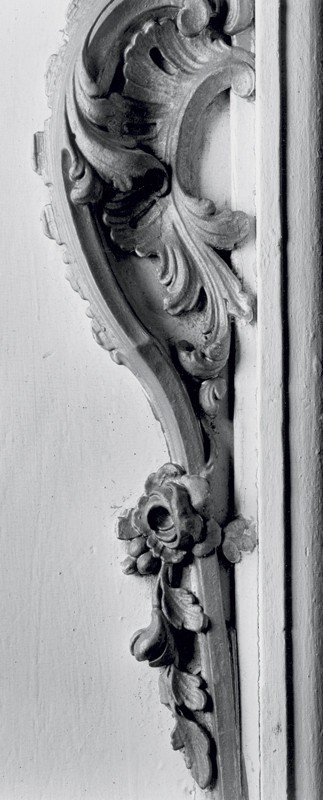
Detail of the left truss flanking the fireplace in Cloverfields (fig. 9).

Frieze appliqué over a door in the parlor illustrated in fig. 13.

Firescreen with carving attributed to Hercules Courtenay, Philadelphia, Pennsylvania, ca. 1770. Mahogany. H. 55 1/2". (Private collection; photo, Gavin Ashworth.)

Detail of the knee carving on the firescreen illustrated in fig. 61. (Photo, Gavin Ashworth.)
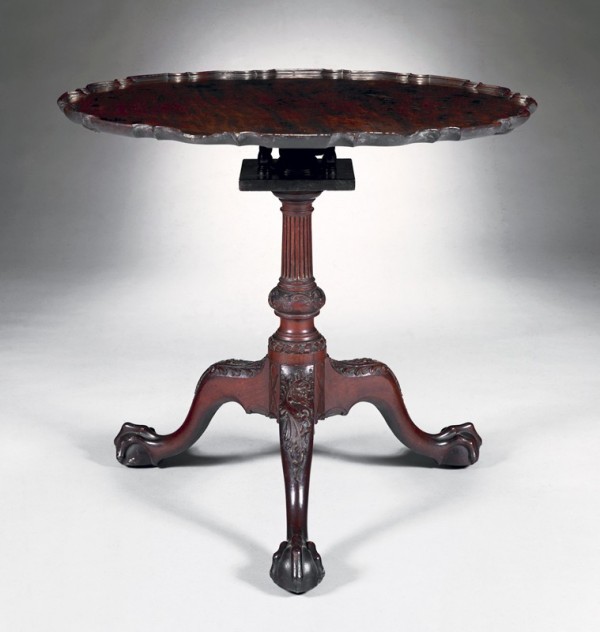
Tea table with carving attributed to Hercules Courtenay, Philadelphia, Pennsylvania, ca. 1770. Mahogany. H. 27 1/2", Diam. of top: 32 7/8". (Private collection; photo, Christie’s.)
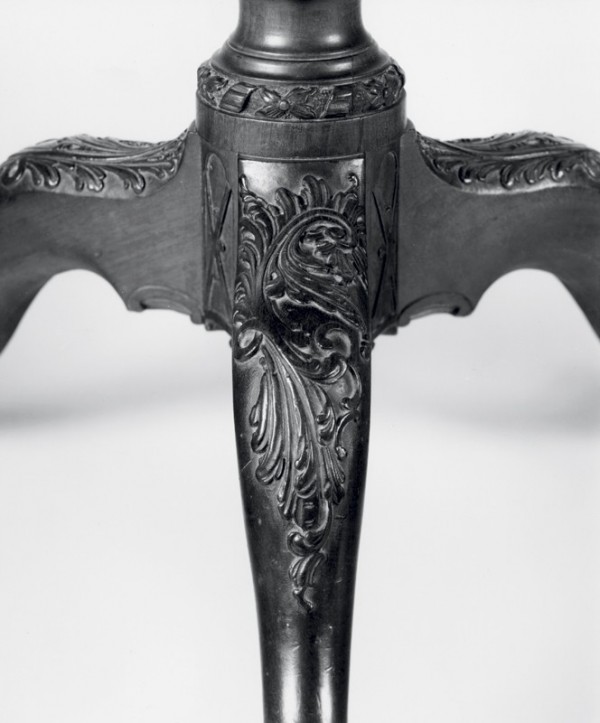
Detail of the knee carving on the tea table illustrated in fig. 63.
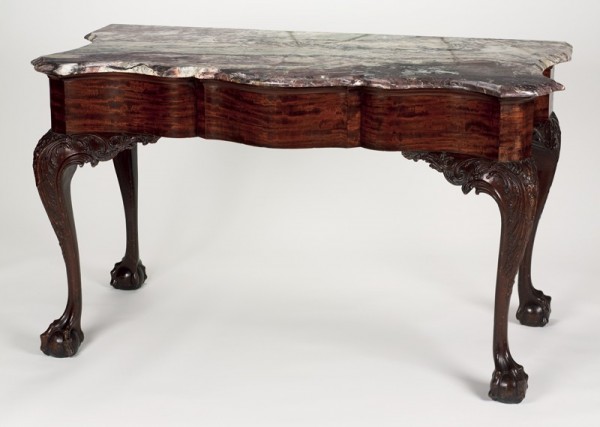
Pier table, Philadelphia, Pennsylvania, ca. 1770. Mahogany with yellow pine. H. 32", W. 54", D. 27". (Courtesy, Rhode Island School of Design; bequest of Charles L. Pendleton.)
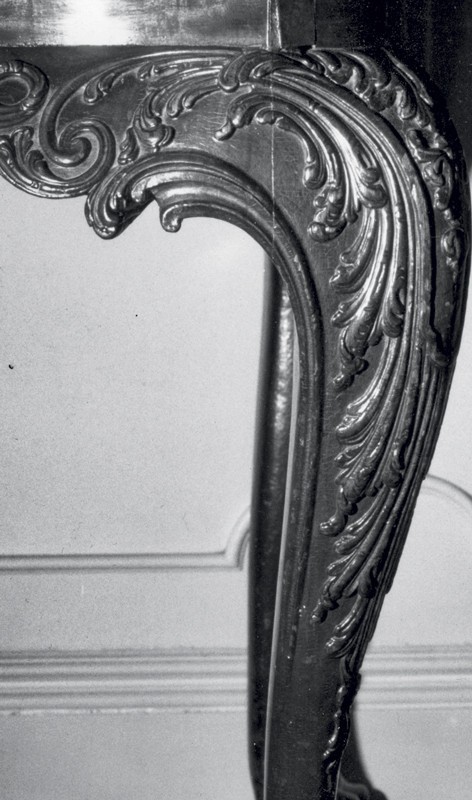
Detail of the knee carving on the pier table illustrated in fig. 65.
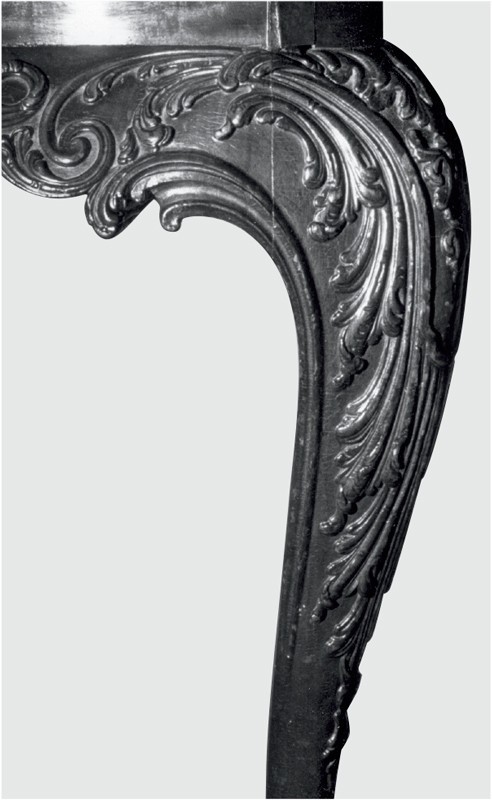
Detail of the leafage in the frieze design illustrated in fig. 22.
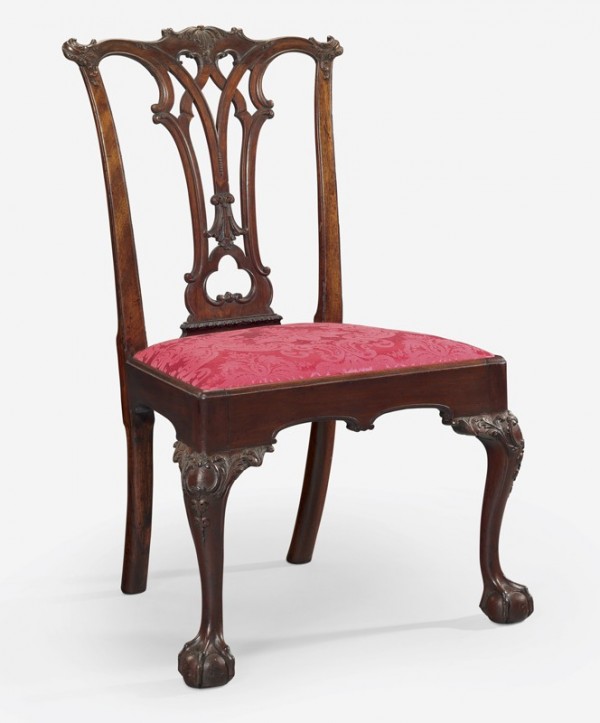
Side chair with carving attributed to John Pollard, Philadelphia, Pennsylvania, ca. 1769. Mahogany with white cedar and yellow pine. H. 37 1/2". (Private collection; photo, Christie’s.) This example, which has the period ink inscription “Deshler” on its slip-seat frame, is from a set of at least six side chairs, two card tables, and an easy chair.

Card table with carving attributed to John Pollard, Philadelphia, Pennsylvania, ca. 1769. Mahogany with oak and yellow pine. H. 28 3/4", W. 33 3/4", D. 16 1/2" (closed). (Private collection; photo, Christie’s.)
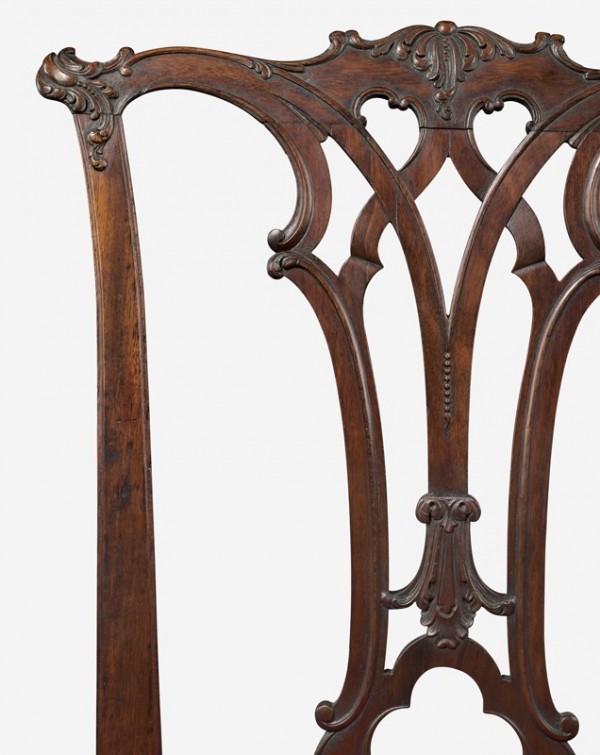
Detail of the carving on the back of the side chair illustrated in fig. 68.
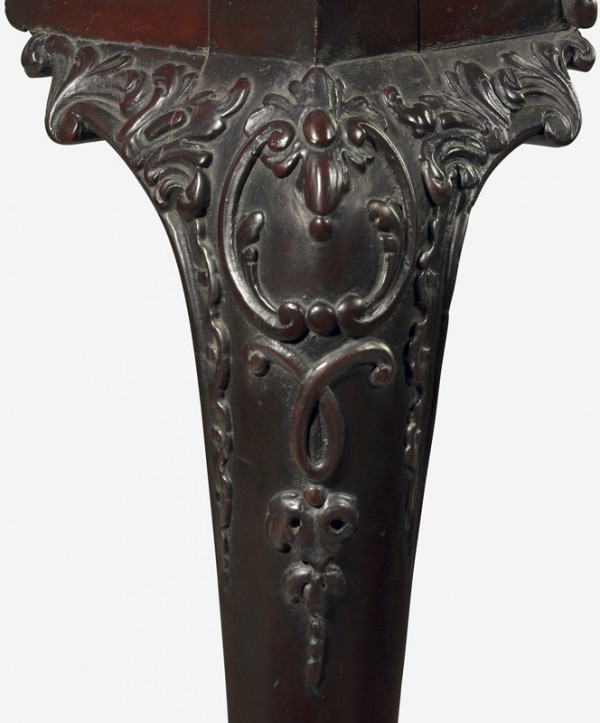
Detail of the carving on the right front leg of the card table illustrated in fig. 69.
